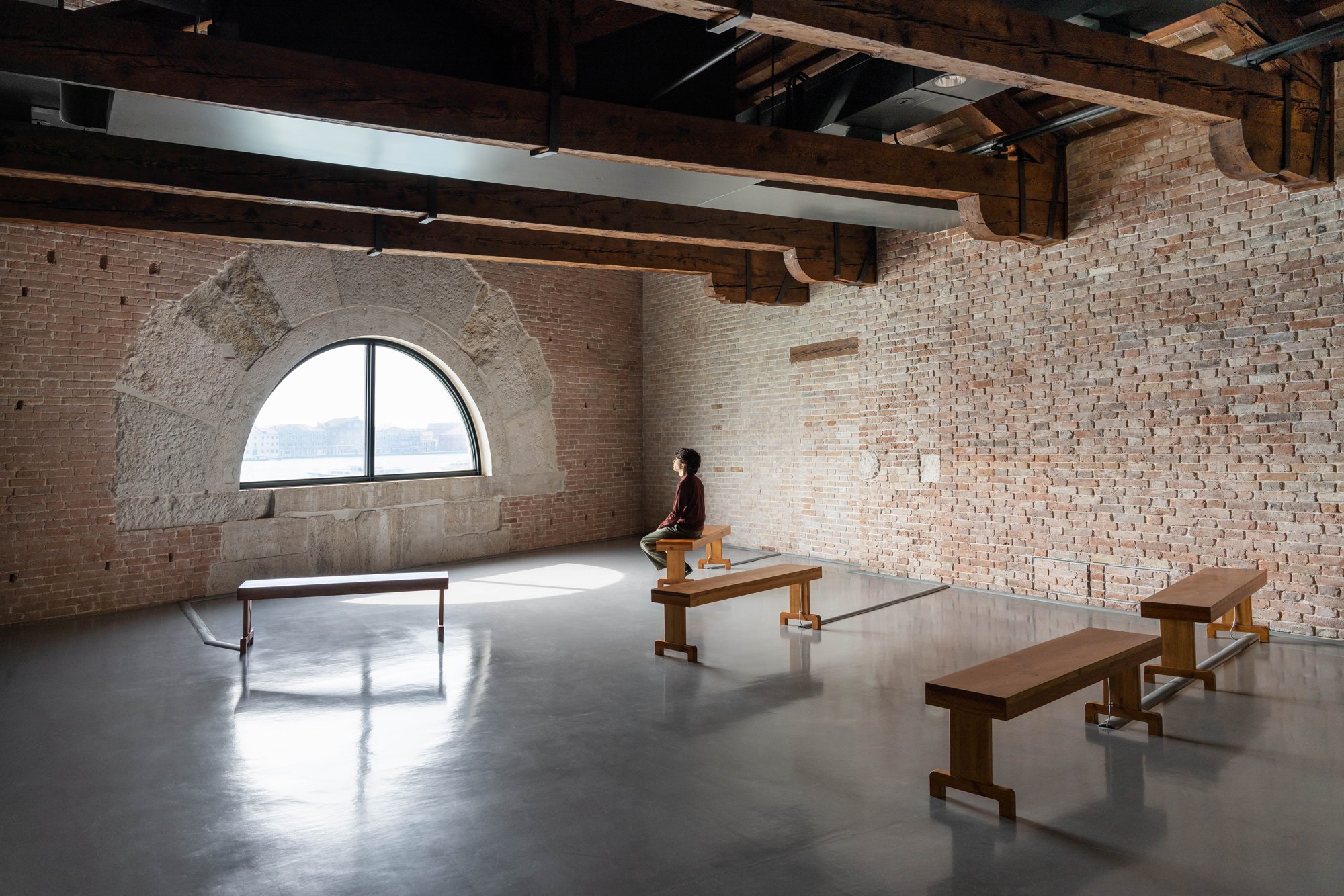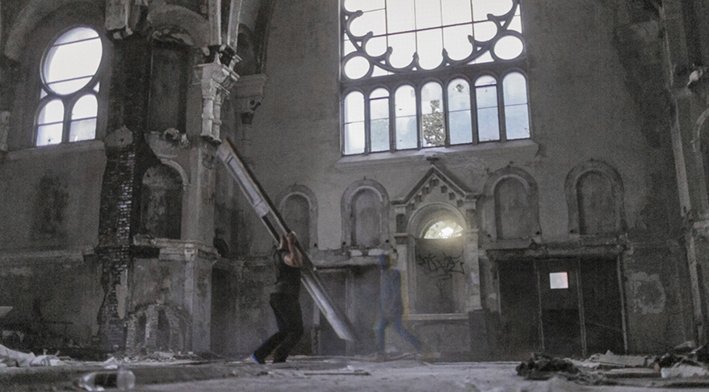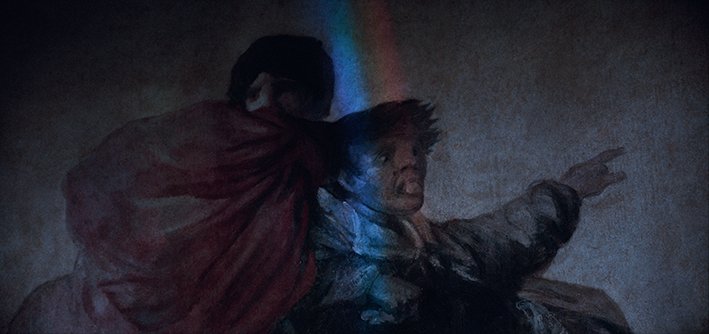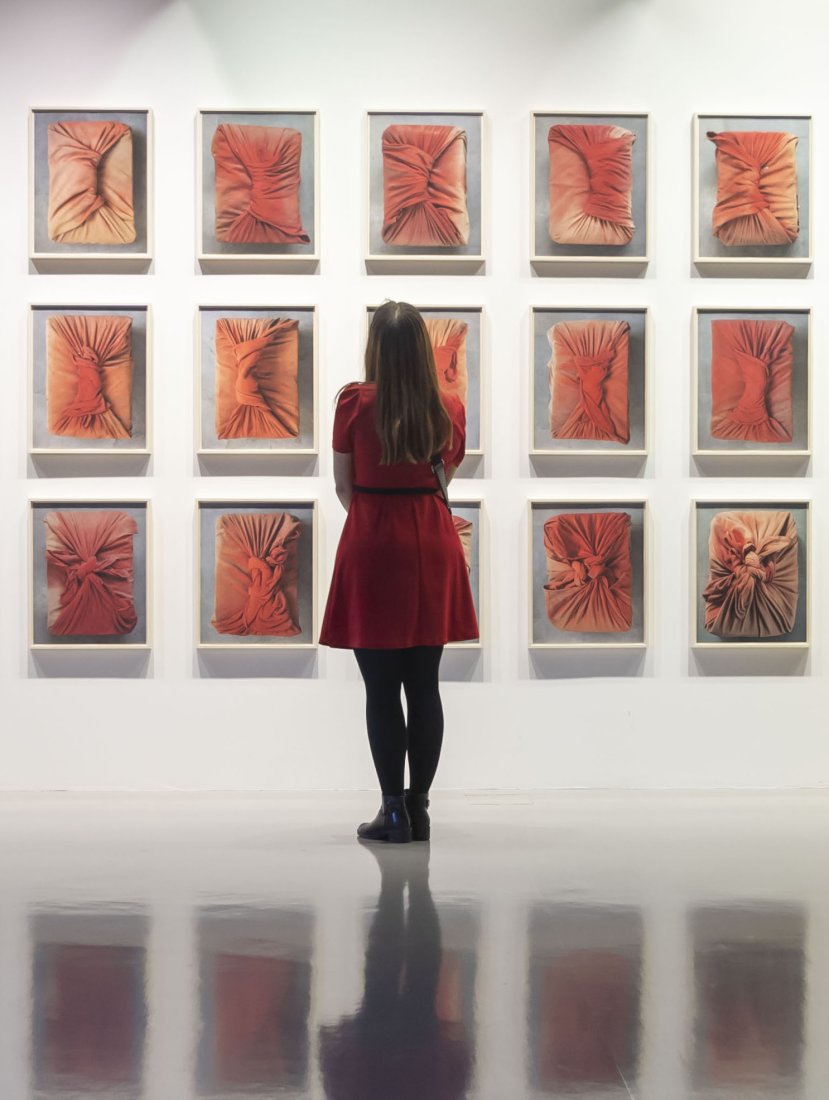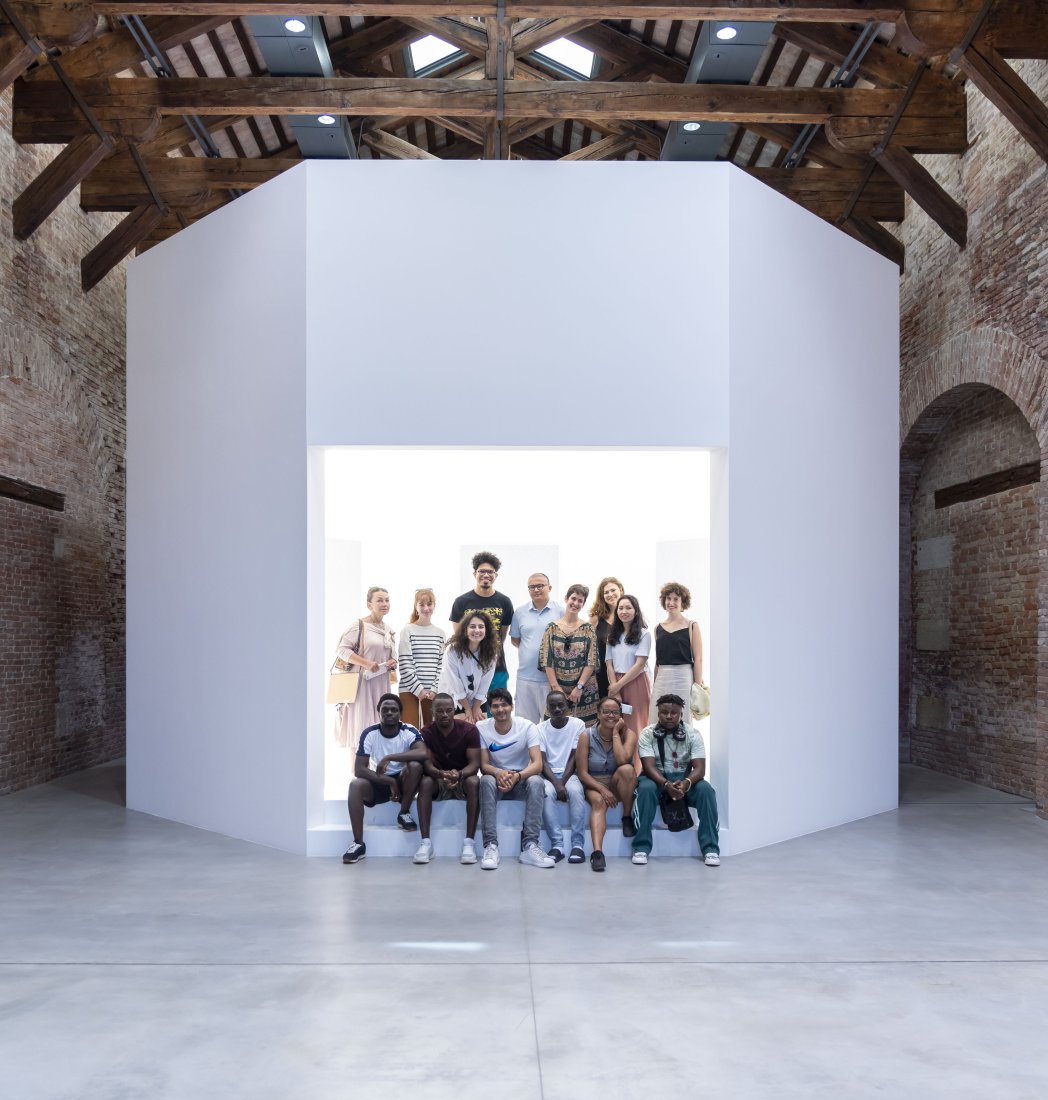"The Image at the Limits of the Visible" by Emma Lavigne
It is a given that the very essence of the icon is reflected in the move toward abstraction effected by Wassily Kandinsky and Kazimir Malevich, both of whom experienced spaces transfigured by the presence of icons, whether in churches, chapels, or izbas with painted walls.
CEO of Pinault Collection and curator of the exhibition
[...]
It is a given that the very essence of the icon is reflected in the move toward abstraction effected by Wassily Kandinsky and Kazimir Malevich, both of whom experienced spaces transfigured by the presence of icons, whether in churches, chapels, or izbas (traditional Slavic countryside dwellings) with painted walls, such as the ones Kandinsky discovered during a trip to the Vologda province in 1889. His immersion in color, associated with the radiance of icons, glowing in the light of candles in the sacred Eastern corner of houses, was a decisive step in Kandinsky’s quest for an invisible that he characterizes as ”spiritual” in his 1912 text “Concerning The Spiritual in Art.” Malevich, during the 1915 Last Futurist Exhibition 0.10 in Petrograd, transposed into space this ‘red’ or ‘beautiful’ corner in which icons are displayed, to present his Black Square on a white background, which he considered the icon of our era. Inspired by icon painters, who did not borrow color or form from reality, as well as by the sound and rhythmic poetry of the poet Khlebnikov, Malevich invented autonomous plastic elements that functioned independently of the visible world and mimesis. In his manifesto “Suprematism: The World As Non-Objectivity, or Eternal Rest” of 1919–1922, he explored the modes of existence of the world beyond the visible. As analyzed by Bruno Duborgel in Malevich: La Question de l’icône, the goal was to make viewers perceive the relation between the visible and the invisible, to reveal the nature of the image not only in its visibility, but especially in its connection to the invisible.
The birth of abstraction is rooted in this aspiration to transcendence, born of the contemplation of icons, more capable of opening the doors of perception to the world in its elusive dimensions than the dynamics of illusionistic space as carried by perspective.
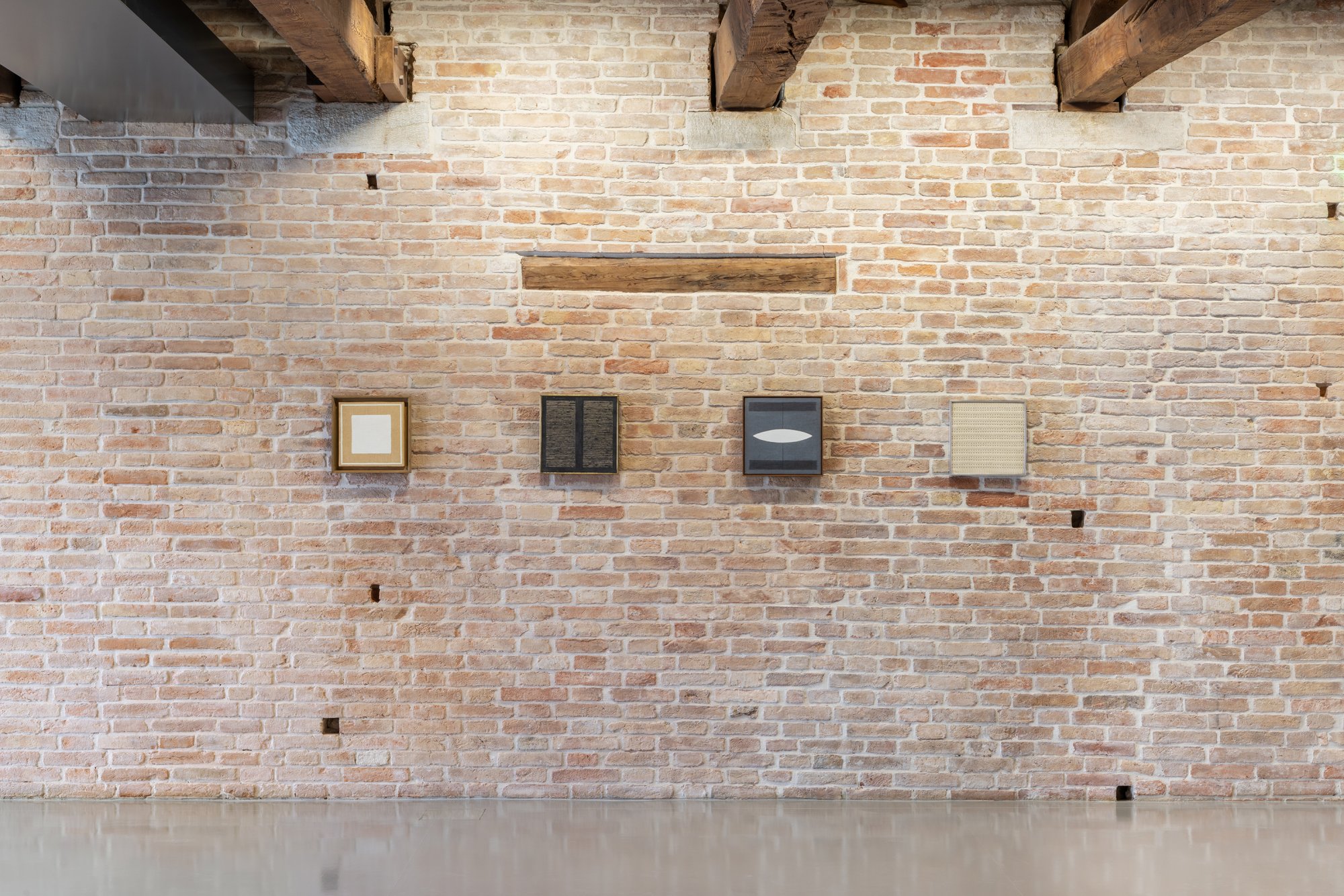
[…]
In our era of the proliferation of the images, certain works generate sound environments, immaterial chapels that reinvest the depths of listening and make perceptible other images, sensations, and affects. In the Torrino of the Punta della Dogana, covered with mirrors and films that diffract light, the polyphony composed by Kimsooja amplifies a spatial experience that tends towards transcendence. Music takes hold of visitors’ bodies, seated on the church pews of Camille Norment’s installation, traversed by the vibrations of sound waves that allow, among the moans of Afro-American gospel choirs, a space of sensory knowledge that awakens the memory of Black communities.
In Dineo Seshee Bopape’s Mothabeng (2022), the sounds extracted from a stone quarry in Tuscany vibrate in the clay chapel through which light shines, reconciling the battered bodies with the earth, anchoring them again in a primordial geological memory. Filmed among the rubble of St. Laurence’s Church, on Chicago’s South Side, Theaster Gates’s Gone are the Days of Shelter and Martyr (2014) makes us experience the disappearance of places of communion, the mourning of a community forever resolved. Music allows the artist to transmute the violence of the situation into an experience of the sublime. Emotionally charged, the gospel song carries the hope of rebirth.
[...]
In Philippe Parreno’s Quinta del Sordo (2021), sound and light reveal and bring to life the fourteen black paintings of Goya’s Villa del Sordo, created between 1819 and 1823, near Madrid. In contrast to the mystical brilliance of the cycles of religious paintings Goya produced for the monarchy and the Church during his career, he painted directly on the walls oil paintings in which black predominates, shaded with ochre and earth. From this Way of the Cross, from this pictorial testament, haunted by the ghosts of his inner world, by his pessimistic political vision that criticizes obscurantism and the Inquisition, all traces of the sacred seem to have disappeared for good.
[...]
Marie-José Mondzain noted how much “all great art is kenotic,” in reference to the concept of kenosis, present in the art of the icon and which defines the emptiness, the withdrawal of the divine. The sacred figures have given way to witches, saturnine monsters, sabbath scenes and stray dogs, constituting a secular Sistine Chapel, in the words of Goya’s biographer Valeriano Bozal, inhabited by the awareness of death. The camera, with its 500,000 images per second, enters like an endoscope into the very body of the painting and probes its mysteries; it thus makes each brushstroke visible, as well as the interstitial spaces between the works or their consubstantial relationship with the house that generated them. It also recreates the imaginary soundscape of this cenotaph through the 3D creation of an acoustic model of the space.
The crackling fire in the hearth, the breath of the wind in the trees, the muffled sound of the bells and the rhythm of breathing plunge us into an intense proximity, an alliance with the painter, a communion that abolishes time.
As the candle’s flame makes the dust fly, Parreno reminds us how much this alchemist cycle opens the floodgates of modern sensibility and the conscience of a world progressively abandoned by the gods, but in which, on the surface of the dark mirror that he holds up to us, the gleam of the past images and those in the making continues to approach the plastic springs of the invisible.
Emma Lavigne
Excerpts from the catalogue of the exhibition 'Icônes'
